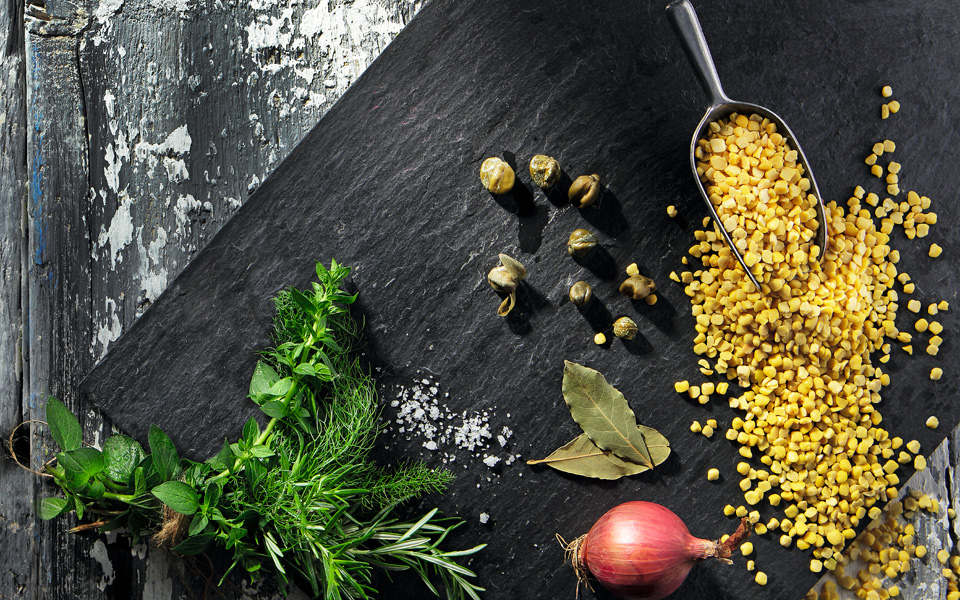5 Magical Open-Air Cinemas to Visit on the...
From Samos to Crete, we've selected...

Every family in Santorini has always produced its own fava
© George Drakopoulos
Preparation & Cooking time: 80'
Serves: 4
Santorini’s fava (split-peas) comes with references that date back to antiquity. According to prehistoric remains of stored crops and seeds from excavations at Akrotiri, the local variety of Lathyrus clymenum has been cultivated exclusively on the island for more than 3,500 years, long before the eruption of the volcano. In fact, Pedanius Dioscorides, a renowned 1st-century physician and botanist, separated the species of plant from which Santorini’s fava is made from other Papilionoideae species that produce this bean in other parts of the world.
Every family in Santorini has always produced its own fava. The unique make-up of the island’s soil, the climatic conditions and, as odd as it sounds, the aridity have helped shape this product, with its velvety texture and sweet flavor.
Theran fava is also very rich in protein (with a content of around 20%) and carbohydrates, while it is smaller in size than other varieties.
It was recently awarded Protected Designation of Origin, meaning that it needs to be grown in a particular way on certified farms and only on Santorini, and also needs to be ground by certified mills.
This delicious pulse is served as a paste, with a drizzle of fresh lemon juice, olive oil and finely diced onions. It is a lovely side dish with fish and shellfish. It can also be served as a soup or used to enrich salads and risottos.
Nutritional Value
A good source of vitamin B1 (thiamine), iron, copper, phosphorus, calcium and magnesium, rich in folic acid and manganese, it helps lower bad cholesterol (LDL) and maintain proper blood sugar levels, boosts the heart and digestive system, and protects the large intestine from cancer. The fact that it does not contain sodium makes it ideal for people with high blood pressure.
Wash the fava thoroughly and place in a medium-sized saucepan with 900 ml of cold water over strong heat, for about 3-4 minutes until it comes to the boil. Lower the temperature and skim the scum off the top with a slotted spoon repeatedly until it stops appearing. Cover the pan and simmer over low heat for approximately 1 hour until the fava thickens and absorbs the water. Do not stir because the fava will release its starch and stick to the bottom of the pan. If it hasn’t softened in an hour, add half a cup of water and keep cooking. Set the fava aside and allow it to rest for about 10 minutes.
While it’s still warm, add the olive oil, salt and pepper. Mix well using a wooden spoon until you have a dip resembling lumpy mashed potato. If you prefer a smooth consistency, pass it through the blender. Place the fava in a deep bowl, garnishing with the oregano, chop up the onion and serve on the side.
• There are about 200 hectares of farmland dedicated to fava on Santorini today, with 300 farmers producing 100,000 kilos a year.
• It is sold packaged only by SantoWines or can be purchased at selected supermarkets, grocery stores and delis.
Thanks to Agapi Roussou for her valuable assistance.
From Samos to Crete, we've selected...
From Santorini sunsets to ancient ruins,...
Discover hidden beaches, authentic tavernas, ancient...